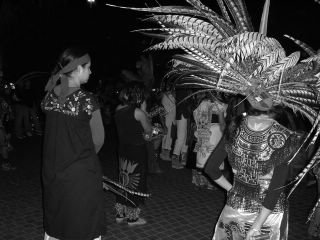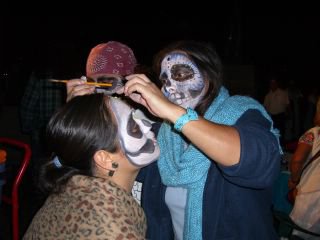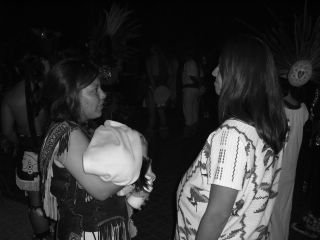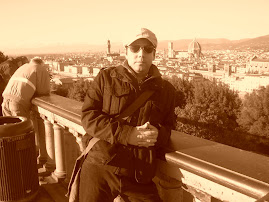
Every now and then, even La Muerte deserves to enjoy a little snack. This female skeleton by Armos really caught my eye because of the wicked grin she is sporting as she devours a nice red-ripe slice of watermelon.
People have always noted the irony of how a watermelon can't help but stretch a wide grin as it is being sliced away, and hence every watermelon slice becomes a smile to the death.
But more importantly, this piece of art I saw as I strolled around the Self-Help Graphics parking lot during the Dia de los Muertos celebration reminded me of a more compelling character from my childhood.
If you were one of the lucky Mexican-American children to have parents thoughtful enough to share with you some culture, surely you were tuned into Univision K-MEX 34 to watch the gloriously wacky world of "Chespirito."
Chespirito is the Sesame Street meets Seinfeld meets Brady Bunch television burrito for all Mexicans during the late 60s through the mid 80s.
The Chespirito Show was appetizer, entree and dessert for the whole family.
It was an amazingly clever and witty situational comedy that capitalized on confusion, character wit, and plot twists to guide, taunt and laugh-til-you-cry torture its audience for decades. Even today, Chespirito is transmitted world-wide and translated into a myriad of languages. Surely, if you tune into Telemundo or Univision, not to mention Galavision or HBO Espanol, you may catch an episode on the air. Chespirito will always be with us, because it is quite possibly the perfect show, combining human tragedy, emotion and tension with such a potent sense of humor, that even the antagonists became cultural icons to several generations in Latin America and the United States.
Enter Florinda Meza stage right.
This art piece specifically reminds me of one of the main characters from Chespirito's many vignettes. Dona Florinda was the neighborhood stay-at-home single mother who with hair tubes on all day supervised the constant infighting between her son Quico, Chavo del Ocho and the infamous Chilingrina. On top of playing the over protective mother of Quico, Florinda also became the damsel-in-distress for Doctor Jirafales, only to become the Amazon feminist for Don Ramon, her unemployed neighbor. Dona Florinda did it all with mop in hand and roll tubes in her hair.
Dona Florinda terrorized specific male characters on the show's plotlines, whether it be because of the hand-in-cookie-jar guilt of the Chavo del Ocho or the here-comes-my-slap antics of Don Ramon.
To read more about Florinda Meza and her eventual marriage to Chespirito himself, series creator Roberto Gomez Bolanos, please click on the following link:
http://siganmelosbuenos.galeon.com/aficiones1024598.html 
















